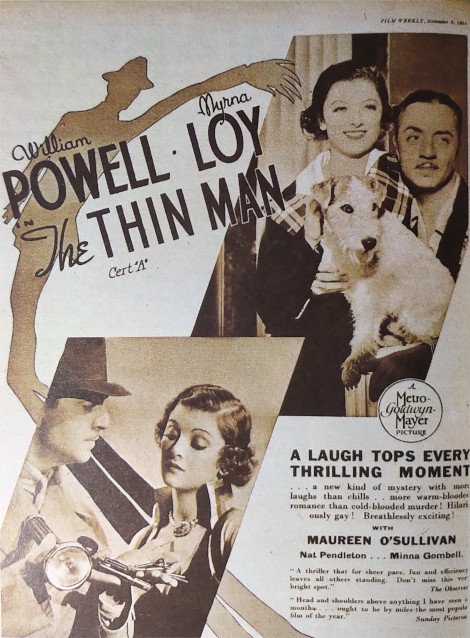This is an article by Brenda Davies about The Thin Man I came across in the collected volumes of The Movie published by Orbis. I'm not sure when this article was written, there are no publication dates listed in it, but I couldn't find anyone else who had uploaded it (or the pictures) so here it is. (I also posted it on Letterboxd.)
The thin man of the title is both suspect and victim, but he makes only the briefest appearances at the beginning of the film. Yet, like Baron Frankenstein, he lingered on in the titles of a whole series of films to become erroneously associated with their leading character, Nick Charles. Presumably the use of the thin man in the titles of the five sequels (After the Thin Man, 1936; Another Thin Man, 1939; Shadow of the Thin Man, 1941; The Thin Man Goes Home, 1944; Song of the Thin Man, 1947), was felt by MGM to be a guarantee of a successful box-office.
The chemistry of the original film works brilliantly. Its mixture of sophisticated comedy, romance and detective story was exactly to the taste of contemporary audiences and its appeal is durable: when The Thin Man was shown for the first time in West Germany in 1969 it ran for more than ten weeks in some towns.
The complications of the 'whodunnit' plot are of no real interest. Frances Goodrich and Albert Hackett, one of several husband-and-wife writing teams who have contributed so much to American show business, made an intelligent adaptation of the novel by Dashiell Hammett whose convoluted plot was essentially unsuited to the screen. Their solution to the structural problem was the elaborate dinner-party sequence which does not occur in the book, and although it is not entirely satisfactory it at least disposes of the loose ends so quickly that the audience is unlikely to spot any flaws. In any case no-one is expected to take the murder and mayhem seriously and indeed the unpleasantness of some of Hammett's characters has been considerably softened. The special flavour of the film lies in the snap and crackle of the dialogue, which neatly captures Hammett's laconic style, and in the characterization of the two principals.
Nick Charles, Hammett's delightful detective, has none of the irritating self-righteousness of Raymond Chandler's hero Philip Marlowe. In fact he seems to have a great deal in common with his creator. Not quite a drunk, Nick is nevertheless happily but inoffensively pickled most of the time, although alcohol seems to stimulate the detecting process.
Nick and Nora, as represented by William Powell and Myrna Loy, have so much careless charm that it is very easy to overlook the flimsiness of the plot. Powell in particular puts over a fantastic confidence trick: the silky voice, the insouciant gaiety, the faultless timing, lend an air of authenticity to a set of wildly improbable incidents, and Miss Loy's matter-of-fact acceptance of each new crisis, her unruffled elegance and quick sympathy complete a relationship in which one gladly believes if only because of its pleasant air of mature sensuality. This was their second film as a team, the first being Manhattan Melodrama also made in 1934 by Van Dyke, to whom must go the credit for realizing their potential in spite of opposition from Louis B Mayer. In all the played together 14 times, including the six Nick Charles films. Their witty performances in The Thin Man are assisted by a well-trained fox terrier who plays Asta with an engaging lack of heroics and a health regard for his own skin, diving under the bed at the first sign of trouble.
Woody Van Dyke, who orchestrated the film so expertly, was a Hollywood craftsman whose 27 years of working life began under DW Griffith and included a number of exotic adventures in faraway places, as well as three of the five Thin Man sequels.
The Thin Man is variously reported to have been shot in 12, 14 or 16 days. Certainly it was done very quickly and a good deal of creative improvisation too place, including Nora's marvellous first entrance when she comes into the hotel laden with parcels and Asta straining on a leash. The dog rushes to his master causing Nora and her parcels to sprawl ingloriously over the threshold. Nick looks up from chatting to his guests, glass in hand, and gestures nonchalantly towards her recumbent form as he introduces 'My wife...'. This is what one finally remembers about The Thin Man: exchanges between two very talented performers, the speed, the fun and the wit of it. Nobody needs to remember who the thin man actually was.
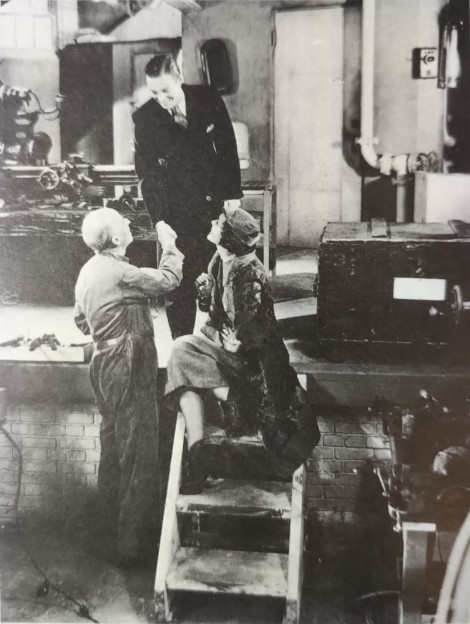
Dorothy Wynant takes her new fiance, Tommy, to meet her father, an eccentric inventor who is the 'thin man' of the title.
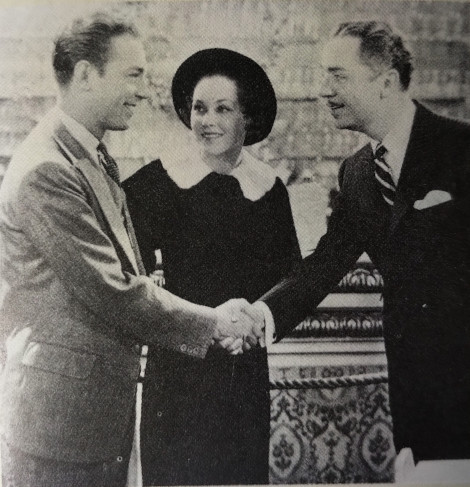
A few months later, in New York, Dorothy and Tommy encounter an old friend of her father - Nick Charles.
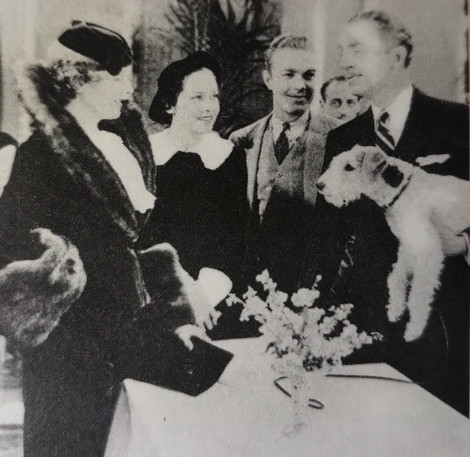
Newly married to the elegant, rich and witty Nora.
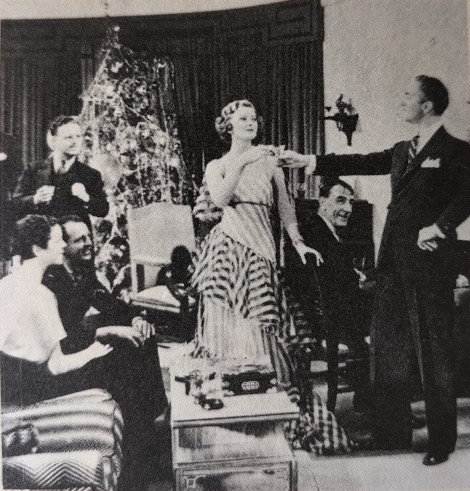
Nick has retired from detective work. But, during a party where Nick is introducing his wife to his underworld contacts,
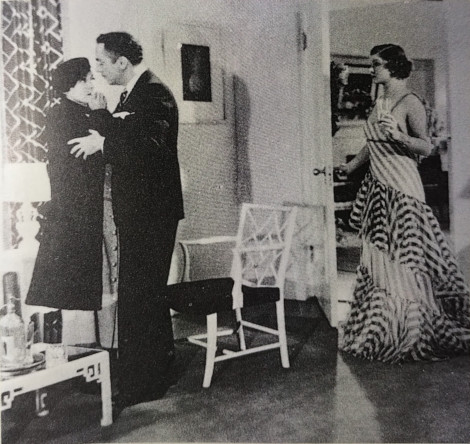
Dorothy arrives begging Nick to find her father.
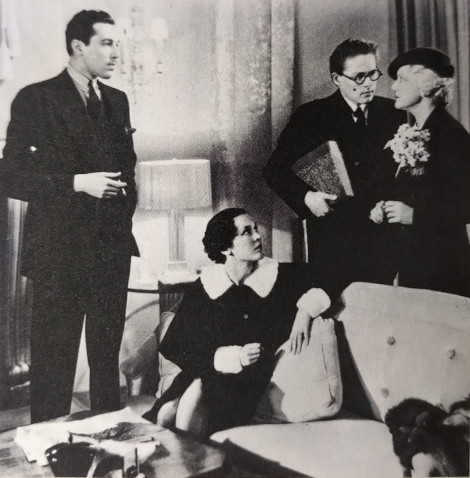
He has disappeared after being suspected of the murder of his mistress, Julia Wolf. Suspects include Wynant's former wife, Mimi (right), her second husband Jorgensen (left), and the family lawyer.
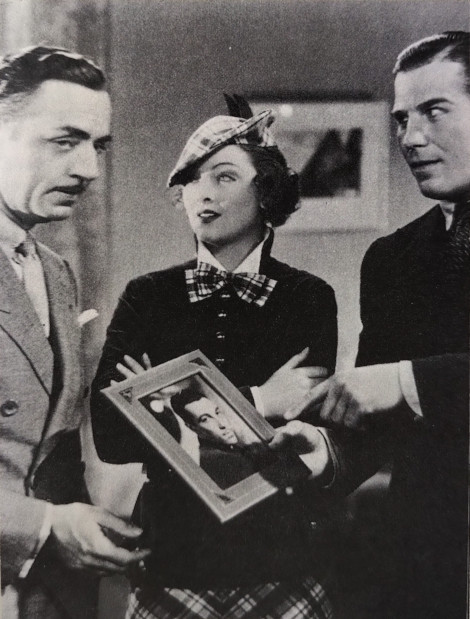
Police Lieutenant Guild is baffled.

Summoning all those concerned to an elaborate dinner party, Nick reconstructs the whole affair with such conviction that the guilty party in all three killings, Wynant's lawyer MacCauley, falls into the trap and gives himself away.

